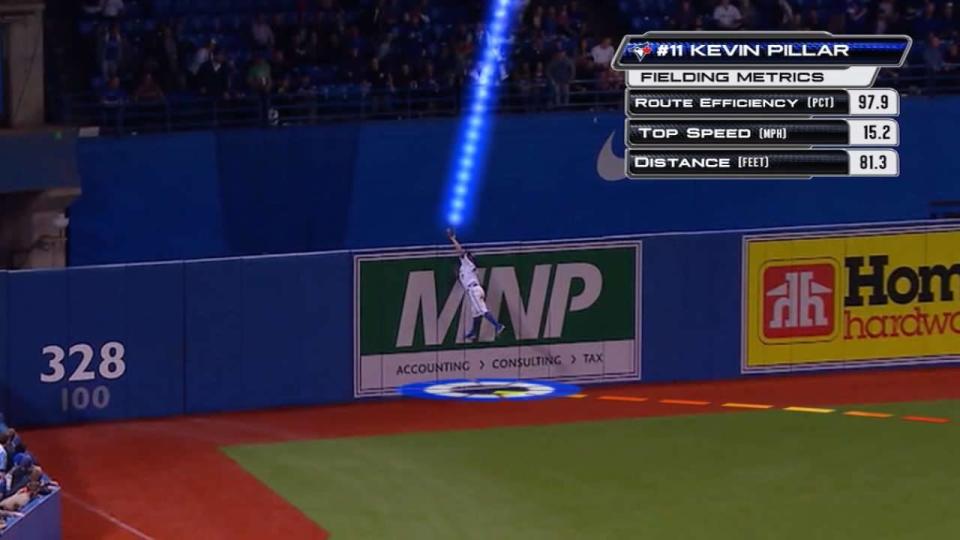MLB’s Statcast: The Technology That Tracks Every Inch of a Game of Inches

Major League Baseball’s postseason begins this week. If our society were at all properly managed, we’d each be given four weeks of vacation time to focus on these important matters.
Nevertheless, as proof that MLB sees baseball the same way I do — a beautiful game in which the more you understand about it, the more obsessed you become with it — it has brought new and extensive stat-tracking technology to this year’s big-audience playoff games.
MLB’s Statcast system, deployed in all 30 major-league stadiums this year, is a high-tech analysis tool that tracks every single play of every single inning in the 162-game MLB season.
It’s an expansion of baseball’s pitch-tracking technology, which will be familiar to anyone who has watched an MLB broadcast in the past decade or so. These are the digital overlays you see in television broadcasts that indicate the strike zone and show precisely where each pitch passes the plate.
Statcast takes that idea and runs with it, so to speak. By way of high-resolution optical cameras and radar equipment installed in each ballpark, Statcast tracks the location and movement of the ball and of each player on the field — on every play — with startling precision.
The system can determine, for instance, the vector, velocity, and launch angle of a ball as it comes off the hitter’s bat. It also tracks the ball’s altitude and hang time and can therefore precisely calculate the distance of a home run.
For base runners, Statcast puts hard numbers to qualities like top speed and acceleration. It can tell you, within a hundredth of a second, how quickly a base runner stealing second manages that first step against the opposing pitcher. Check it out:
For defensive plays, the Statcast system gets even crazier. It displays how quickly an outfielder reacts after a ball is hit — or even before it’s hit. (Great fielders can anticipate where the ball is headed by watching the pitch coming in.) By crunching the numbers on the ball’s flight path and the distance covered by the fielder, Statcast even generates a relative route efficiency percentage. On that throw back to the infield, Statcast will tell you the velocity of the thrown ball and the transfer time between catch and release.
All these new defensive metrics are having a huge impact inside the game, as managers and front office people have a wealth of new evaluation tools for filling out that lineup card or making that midseason trade.
For the baseball fan watching at home — on TV, laptop, or tablet — the Statcast system opens up a whole ’nother level of the national pastime. The statistics and graphics are generated within seconds, so they can be included in instant replays during live broadcasts. Playoff games on Fox, TBS, and the MLB Network will feature Statcast replays.
Having clicked though a ton of Statcast videos following Wednesday night’s National League wild card game, I’ve concluded that there’s no such thing as too much information when it comes to baseball. The game really does become more interesting the more you know about it, and that’s not always the case in life. The Kardashians come to mind.
Watch for a lot more Statcast content this postseason — baseball insiders are calling it the biggest thing to happen to instant replay since the technology was introduced more than 50 years ago. In fact, you might say that Statcast is like instant replay on steroi — never mind. Bad analogy.
Glenn McDonald writes about the intersections of technology and culture at glenn-mcdonald.com and via Twitter @glennmcdonald1.

 Yahoo Finance
Yahoo Finance 